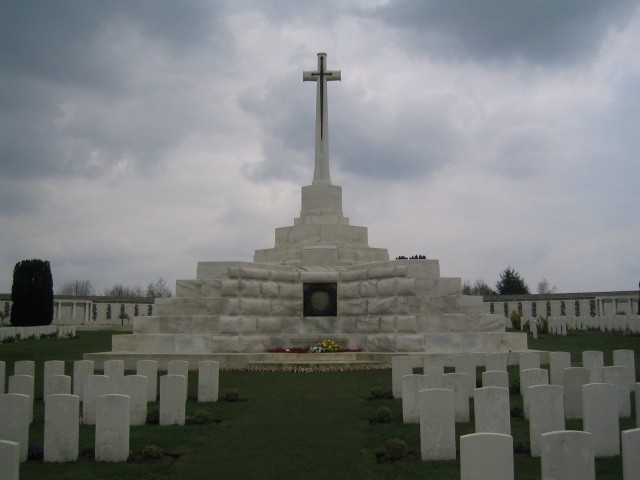For the 1914-18 Project, the commission is organizing and getting everything ready for four years of events, memorial commemoration, wreath laying ceremonies and tours, to mark the 100th anniversary of the outbreak of the First World War.
Restoration teams are already working on each cemetery and on all memorials to make sure everything is in perfect condition before visitors start coming early next year. Other works include the replacement of headstones and memorial panels, building, gardening and re-engraving.
In the northern Europe area, director Ian Hussein said work doesn’t ever stop, it is an ongoing job for the commission and it runs day and night. Commemorations will take place at over 24,000 locations in about 150 countries. Locations include small memorials, like a single headstone to large cemeteries such as Tyne Cot, at Ypres, in Belgium.
People are already visiting, with numbers rising everyday, not only because of the 100th mark but also to learn more about the First World War and the Second World War. Young visitors are being received by the commission more and more often now, with teachers and coachloads of students, which is a great achievement, especially for the little ones, who will now understand better and remember the priceless history lessons they learn during their tours.
Five locations in France and northern Europe have been selected as “iconic sites” of the centenary, where a big number of people are expected to visit. These are: Tyne Cot, St Symphorien, at Mons, in Belgium, Nieuwpoort Memorial at Flanders, in Belgium, Menin Gate at Ypres, Island of Ireland Peace Park at Messine, near Ypres.
At Tyne Cot especially, as it is the Commonwealth War Graves Commission’s largest cemetery, work so far includes 7,800 re-engraved headstones, re-engraved memorial panels which bear the names of 35,000 fallen servicemen and women, 8 kilometres of renovated borders, 36,000 replanted plants with 2,200 roses and almost 8 kilometres of returfed borders, repaired walls and chapels and so on, The Scotsman reports.
Mr Edwards from Thornton Heath, London, is 49 years old and he has been working with the Commonwealth War Graves Commission since 1988. He started as a stonemason and now he is a supervisor in the northern Europe area. He said he loves his work and remembered one day when he was re-engraving a personal inscription on a gravestone and he got a tap on the shoulder from someone. ““You look up, and they just say thank you. And for me that was probably the most rewarding job, that somebody had come, they could see what you’re doing and your work was respected,” recalled Mr Edwards

